Hot and humid days near the end of the school year remind me that I have often heard older adults remark that when they “tried their entrance” it was always on the hottest days of June.
Entrance exams were required for admission to high school in Ontario from 1853 to 1924. Passing required a score of 60% or better on each of the ten or more papers. Rules were strict. Leaving the room meant not being allowed to return. Until 1918, getting sick meant failing. After that time, a medical certificate and recommendation by one’s teacher let the student enter high school.
Teachers would not let students they thought would fail take the exams, because parents and trustees tended to judge the worth of the teacher on the basis of the students’ performances on the exams.
Each subject required a different length of time, with up to two and a half hours for mathematics and literature and 40 minutes for spelling and writing.
Many students failed the entrance exams. In 1890 and 1891, just over half of those who tried the exams passed. Those who did pass were listed in order of ranking in the local paper.
By 1924, some high schools accepted principals’ recommendations instead of entrance exams for students. Generally, students with 60% or better on the year’s work were recommended and the rest took the exams if they wished to enter high school. By 1949, entrance exams had mostly disappeared from the education scene.
For a taste of what these students experienced, here is a sampling of questions from the 1899 High School Entrance examination papers:
Drawing: “Draw a cup and saucer, the handle of the cup to the left, and the top about two feet below the level of the eye. The drawing is not to be less than two inches in diameter.”
Composition: “Write a composition of at least thirty lines, taking for your subject any one of the following: a) An imaginary Journey from Toronto to Vancouver, b) A Thunder Storm, c) A Railway Accident, d) The Battle of the Plains of Abraham, e) The Heroine of Vercheres.
English Grammar: “Write the first person singular of all the indicative tenses of the verb take a) in the progressive form, b) in the emphatic form.”
Literature: “Quote one of the following: — a) The four stanzas of Before Sedan, beginning “What was that white you touched?” b) The first two stanzas of The Three Fishers c) The first two stanzas of “To Mary in Heaven.”
History: “State the causes and the results of the American War of Independence.”
Geography: “Draw an outline map of South America, indicating with names the chief islands, rivers, mountain ranges, and the political subdivisions.”
Arithmetic: “In what time will $450 amount to $582 at 5.5 per cent. per annum, simple interest?”
Physiology and Temperance: “What is the thorax? The abdomen? How are they separated? What organs does each contain?”
Examination papers in most subjects, even arithmetic, carried the following note: “One mark is to be deducted for each misspelt word. A maximum of five marks may be deducted for want of neatness.”
Sources:
“When Exams were Exams!” by Jean Elford, The Gazette, July 4, 1973
Annual Examinations, 1899, High School Entrance, Education Department, Ontario

